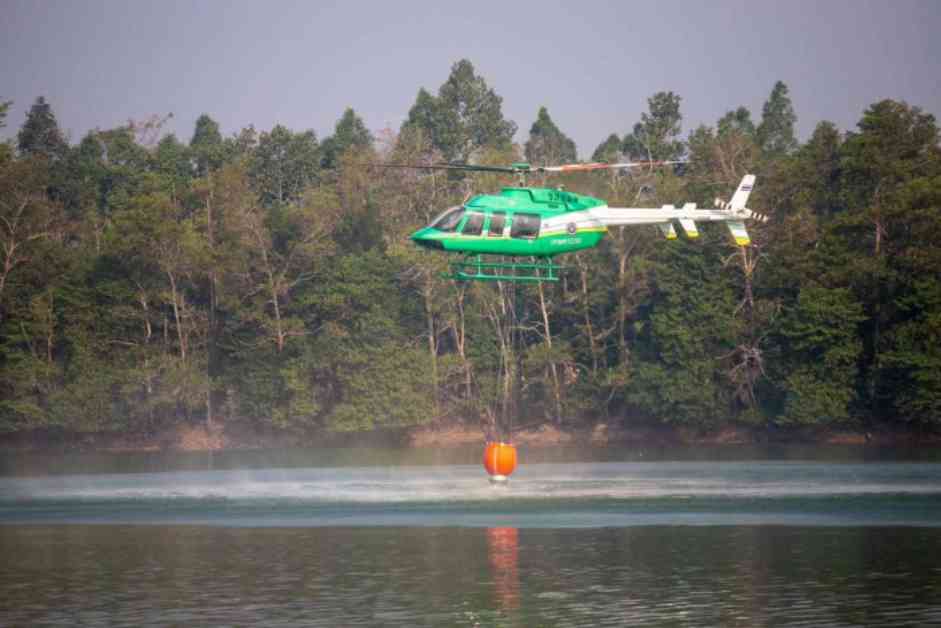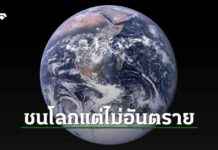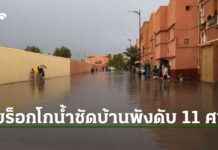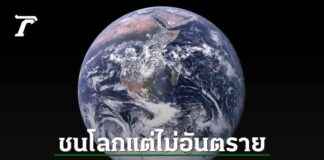Clean Air Initiative in Multiple Thai Regions
As the sun rose over Thailand on a Tuesday morning, the nation found itself at a crossroads of air quality. People in 41 out of 77 provinces across the country woke up to safe, breathable air, a welcome relief amidst growing concerns about pollution. However, in some regions, particularly in the North, the Central Plain, and the East, ultrafine dust particles continued to linger in the atmosphere, posing a threat to public health.
According to the latest report from the Geo-Informatics and Space Technology Development Agency (Gistda), levels of particulate matter 2.5 micrometers and less in diameter (PM2.5) were monitored at 8 am. The data revealed a mixed bag of air quality across the nation, with no red levels (considered hazardous to health) of ultrafine dust detected nationwide.
In provinces where air pollution levels were cause for concern, the readings hovered at orange levels, indicating a moderate impact on health. The range of PM2.5 levels varied from 38.6 to 72 micrograms per cubic meter of air over the past 24 hours in 36 provinces, just slightly above the safe threshold of 37.5µg/m³.
The province of Sukhothai topped the list with the highest recorded PM2.5 level at 72µg/m³, closely followed by Trat, Phrae, Kamphaeng Phet, and others. These regions faced a challenge in combating air pollution, with levels hovering at the brink of impacting public health.
Mixed Air Quality Across Thailand
In descending order of PM2.5 levels, provinces such as Pattani, Yala, and Nakhon Pathom found themselves in the yellow zone, indicating a moderate level of air pollution. While not at the critical level, these regions needed to be vigilant and take necessary precautions to safeguard public health.
On the other hand, twelve provinces enjoyed good air quality, represented by green levels of PM2.5. Regions like Surat Thani, Khon Kaen, and Phatthalung breathed a sigh of relief as they woke up to cleaner, fresher air, a stark contrast to the neighboring provinces grappling with pollution.
In a heartening revelation, thirteen provinces in the Northeast boasted very good air quality, represented by blue levels of PM2.5. From Roi Et to Amnat Charoen, these regions set an example for the rest of the nation, showcasing the importance of environmental preservation and sustainable practices.
The map provided by Gistda painted a vivid picture of the varying air quality across the regions, with colors representing the levels of pollution. From the lush greenery of provinces with good air quality to the amber hues of regions facing challenges, the map served as a visual reminder of the urgent need for concerted efforts to combat air pollution and preserve the environment for future generations.
As communities grapple with the impact of air pollution, it becomes increasingly clear that collective action is the key to ensuring a healthier and sustainable future for all. The battle for clean air is not confined to a single region or province but requires a united front to address the root causes of pollution and pave the way for a greener, cleaner tomorrow.
In the face of environmental challenges, every individual has a role to play in advocating for cleaner air and a healthier planet. By taking small steps in our daily lives, such as reducing carbon emissions, conserving energy, and supporting eco-friendly initiatives, we can contribute to a significant change in our environment and create a better world for future generations.
As the sun sets on another day in Thailand, the promise of cleaner air and a brighter future beckons. Let us join hands in the fight against air pollution, for the health of our planet, our communities, and ourselves. Together, we can make a difference that will resonate for generations to come.



















